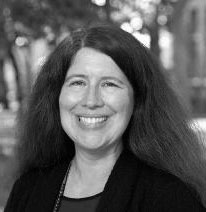PARIS FRANKLIN
Copy Editor
franklpm@plu.edu
Imagine walking into a room filled with exhibits from your time period. Imagine passing photos, blurbs of text and artifacts that represent the people living around you.
Now, imagine continuing that trend and walking through every era all the way back into the time of Vikings. With the Scandinavian Center’s new exhibit, you can do that.
This January, the newest Pacific Lutheran University exhibit will be “Forgotten Nordics: Ethnic Diversity and National Narratives.”
The interactive exhibit will highlight diversity that’s been present in Scandinavia since it was first inhabited by Vikings.
Six different sections will be present, beginning with the Viking age and going on to educate about religion, colonization, national romanticism myths, World War II and contemporary efforts of migration and inclusion of national identity.
On Oct. 21, the Scandinavian Center will host a preview of the new exhibit and a round table discussion of modern global issues like the refugee crisis in Europe.
“The round table discussion is going to be really interesting,” Hagstrom said. Hagstrom added that Troy Storfjell from the linguistics department and Angie Hamburg from the Diversity Center will be speaking alongside her.
The full exhibit will debut during J-term, but Hagstrom and Ward wanted to give Lutes a chance to sit in with experts and begin learning before the display is even open.
“It is going to be really exciting and cool and everybody should come see it when it is done,” Hagstrom said.
Overall, the exhibit’s goal is to educate “in the sense of all of the different groups that people don’t talk about,” said senior Chloe Hagstrom, an intern for the Scandinavian Center.
“Scandinavia is often talked about as homogenous and that’s not true […] We have these different shifts of who is in and who is out,” Hagstrom said.
She and Elisabeth Ward, the lead curator of the Scandinavian Center, hope to send a message to students that says, “look at all of these different cool people that have been coming and going for thousands of years,” Hagstrom said.
One year after starting work for the Scandinavian Center, Hagstrom is helping curate her second exhibit.
This time around, she is in charge of writing the script for half of the exhibit; the bays on national romanticism myths, World War II and contemporary efforts of migration and inclusion of national identity. Ward will be curating the Viking age and religion bays, and Troy Storjell, a Scandinavian studies professor, will cover the topic of colonization.
While curation is not her ultimate goal, Hagstrom said she is very happy with her time in the Scan Center. “It is a really useful experience, especially thinking about anthropology and also archaeology because working with creating exhibits, especially in a cultural setting, you’re working with culture, you work with language—linguistics—and artifacts,” said Hagstrom.
She feels that curation “gives some really good life experience in how to put things into a readable or legible context for other people.”
After completing her study of anthropology and global studies with an emphasis in transnational movements and cultural diversity, Hagstrom hopes to go into foreign affairs in her home country of Norway.
Hagstrom’s Capstone studies how countries struggle with issues like Islamophobia and how national identity is then affected, and it is the main reason that Ward chose her to help curate the new exhibit. In the wake of so many tragedies caused by extremist groups, her focus surrounds the recent shift of racism to become cultural when a group moves countries as opposed to it being based on skin color.
Hagstrom and Ward said they hope that upon leaving the exhibit, visitors will “recall different marginalized groups in the Nordic region and infer that the populations within the Nordic region are trying to embrace multicultural identity.”
While creating the exhibit, Hagstrom followed the question: “How do you translate this into something that anyone could come in and understand?” She recognizes the difficulty in created content that may be difficult to swallow for an average person.
“Since not everyone is an anthropologist, you want people to read through the exhibit, walk through, look at the pictures, and create this understanding for themselves,” said Hagstrom.
While foot traffic is typical from community members and PLU alumni, Hagstrom wants to remind current Lutes that they are, of course, always welcome to drop in. “We try to be really inclusive. The Scan Center is not just for Scans or for Scan affiliated people, but for everyone. It is for anybody who wants to come in and learn about a different culture,” elaborated Hagstrom.






























